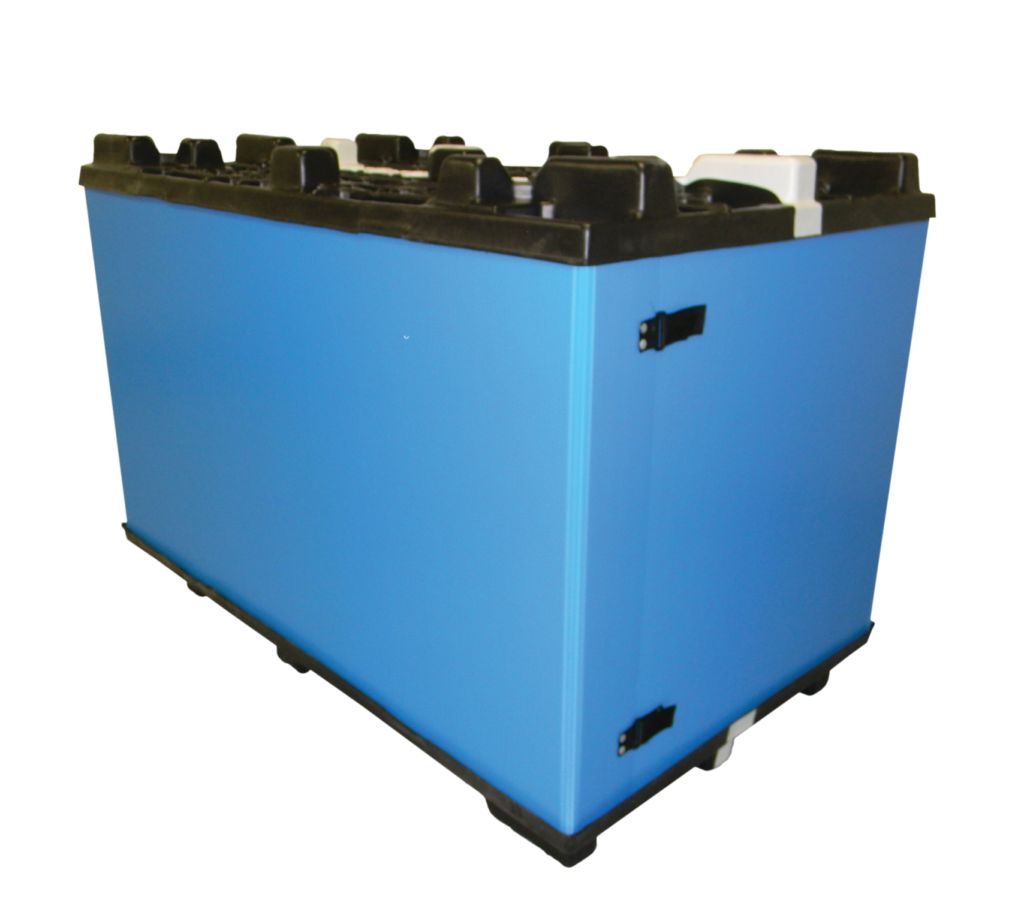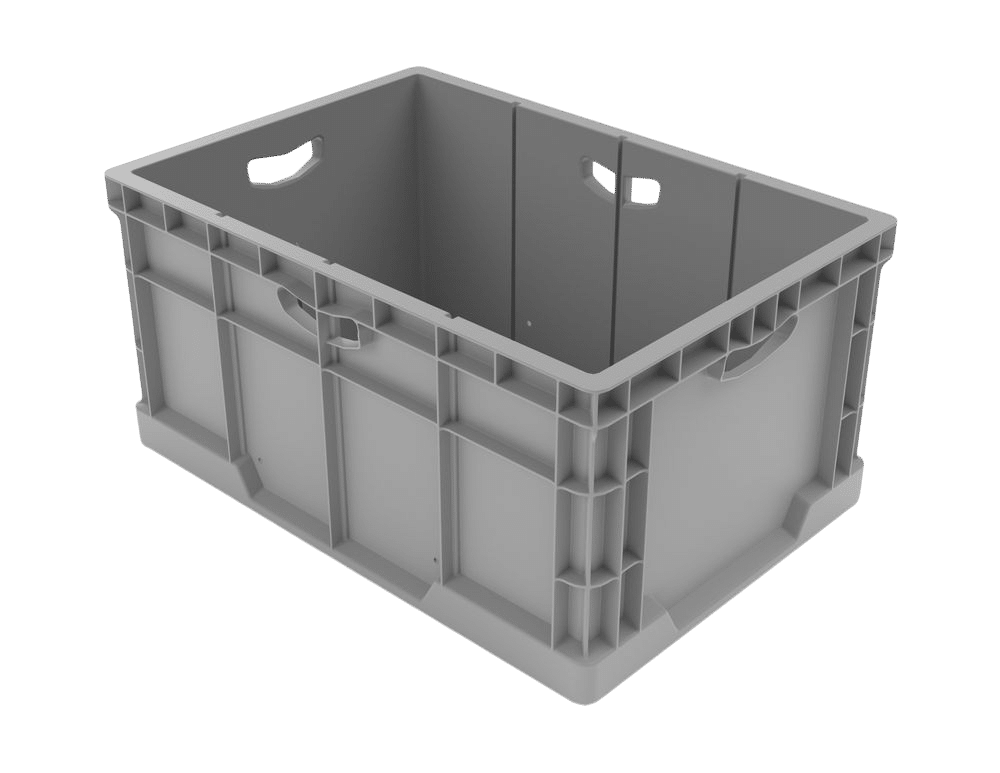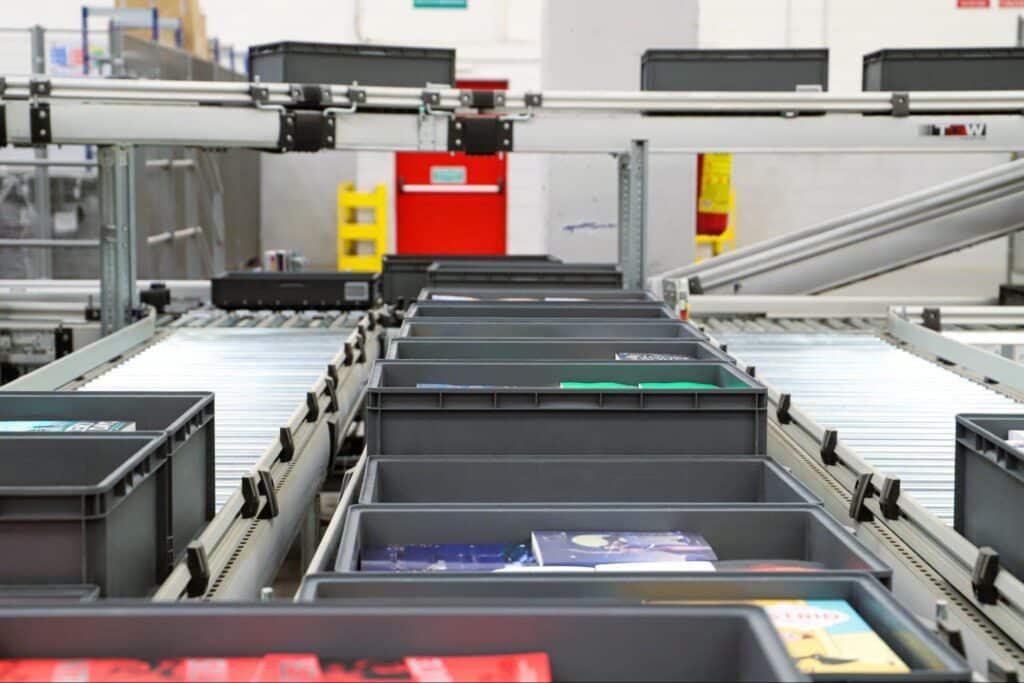Keyword: Industrial Packaging Solutions
Meta title: Transformative Industrial Packaging Solutions for Businesses
Meta description: Discover transformative industrial packaging solutions that enhance efficiency, ensure safety, and support sustainable practices for diverse businesses.
Industrial packaging is a critical component in the seamless movement of goods, safeguarding everything from delicate electronics to heavy automotive components during transport and storage. Designed to withstand the rigors of any supply chain, the right packaging solution does more than just prevent damage—it optimizes operations, streamlines handling processes, and ensures regulatory compliance. By leveraging secure and specialized packaging, businesses can significantly boost their logistical efficiency, protect their bottom line, and ensure products arrive safely at their destination.
The Strategic Role of Industrial Packaging
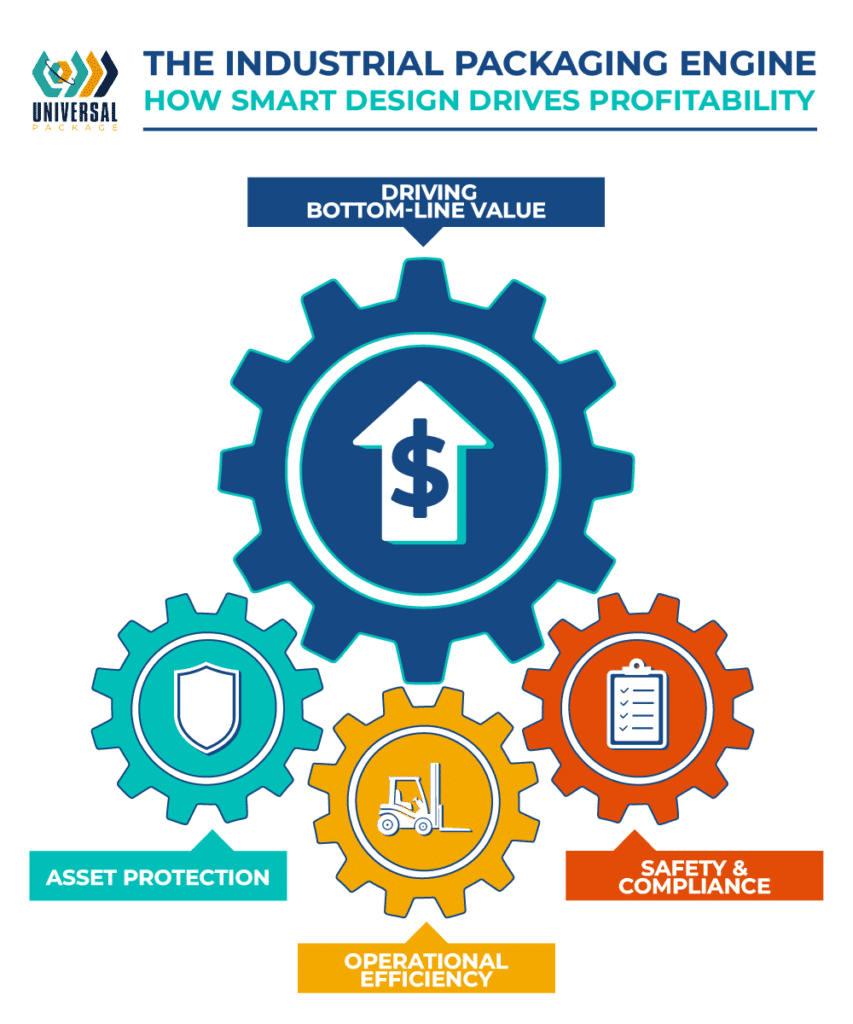
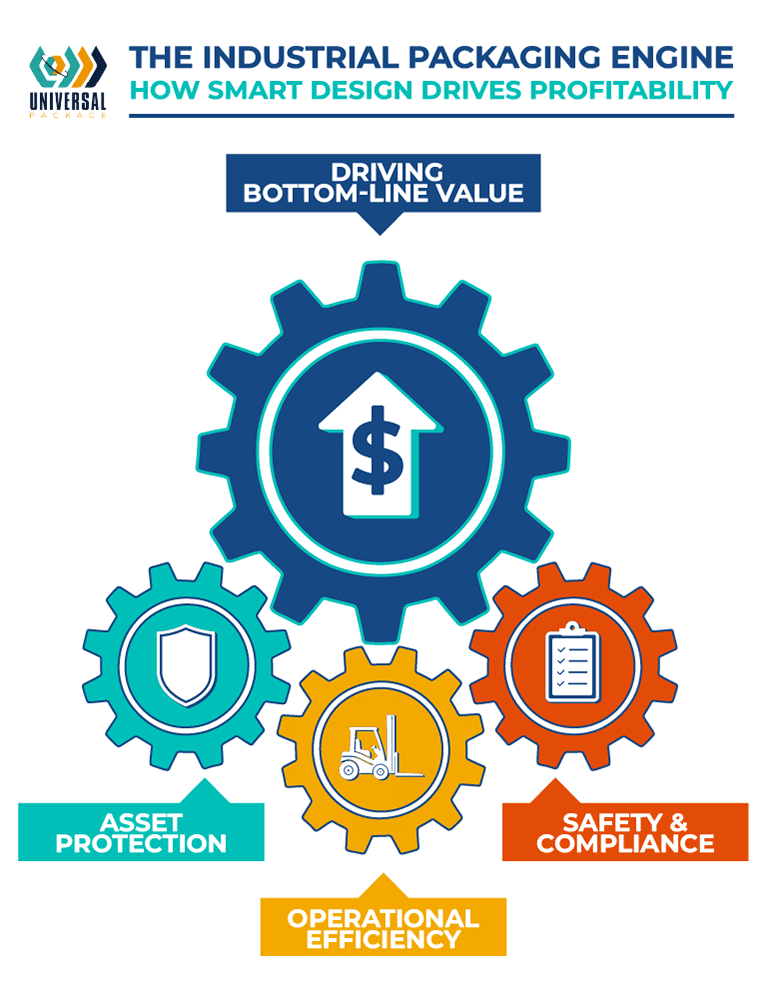
Industrial packaging serves a much larger purpose than simply containing a product. It is a strategic asset that directly impacts your operational success, from the production line to the final delivery. By fulfilling several key functions simultaneously, a well-designed packaging system becomes a powerful tool for streamlining logistics, protecting assets, and driving profitability.
Primary Function: Uncompromising Product Protection
At its core, industrial packaging is your first line of defense. Its primary function is to shield products from the numerous hazards they face throughout the supply chain, including compression during stacking, impacts from handling, and damage from moisture or temperature fluctuations. Effective, secure packaging drastically minimizes the risk of damage, which in turn reduces the costly cycle of returns, repairs, and replacements, ensuring your products arrive in perfect condition every time.
Streamlining Your Operations
Beyond protection, the right packaging brings order and efficiency to your internal workflows. Well-designed solutions with standardized dimensions simplify material handling, whether products are moved by forklifts, conveyor belts, or manually. In the warehouse, stackable or collapsible packaging maximizes space utilization and improves inventory management. By keeping goods organized and easy to access, effective packaging for storage ensures that every stage of your operation, from warehousing to shipping, is geared toward maximum operational efficiency.
Ensuring Safety and Compliance
For many industries, packaging is a critical component of regulatory adherence. Sectors like medical, electronics, and food and beverage require packaging that meets strict safety, hygiene, and labeling guidelines to prevent contamination and ensure consumer safety. The right packaging solution is built to comply with these standards, providing peace of mind and protecting your business from costly violations.
Driving Bottom-Line Value
Ultimately, these functions combine to create significant financial value. By preventing product damage, you eliminate replacement costs. By optimizing space and standardizing handling, you lower storage and labor expenses. And by ensuring products arrive safely and on time, you enhance your brand’s reputation and build customer trust. A thoughtful industrial packaging strategy is a direct investment in your company’s efficiency, reliability, and long-term success.
A Guide to Industrial Packaging Materials
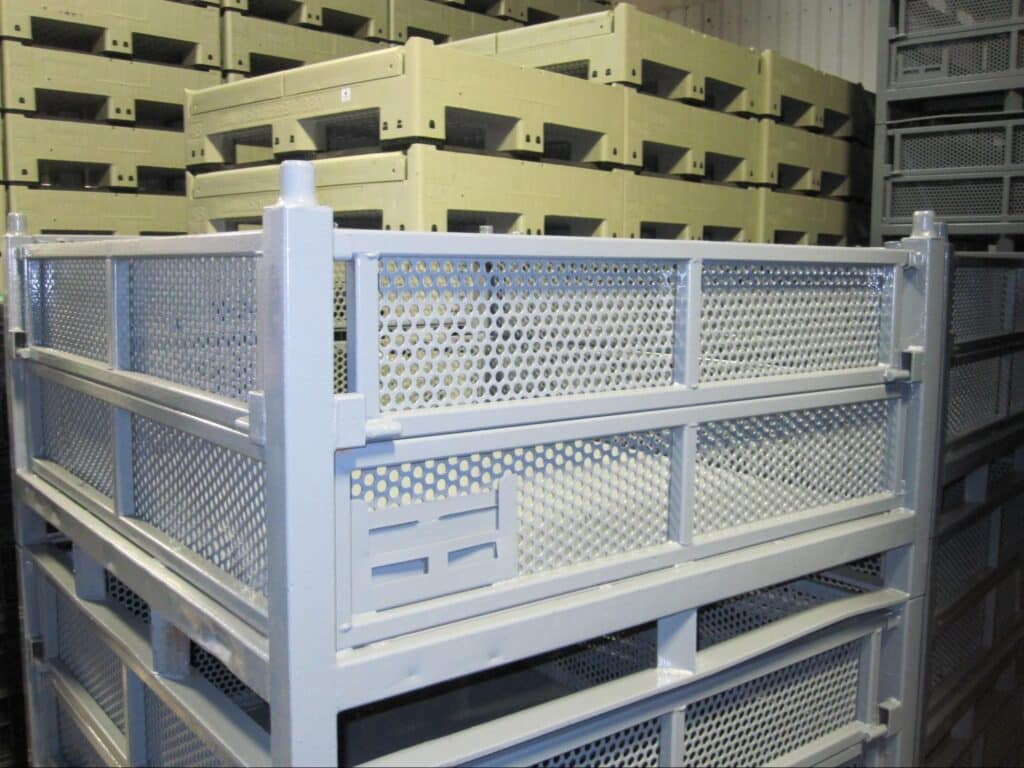
Selecting the right materials balances durability, cost, and sustainability. Common materials include:
Corrugated Plastic Containers
Lightweight and robust, corrugated plastic containers offer durability and can be customized with dividers or Foam Packaging Assemblies. They resist moisture and chemicals, making them ideal for demanding environments.
Foam Packaging Assemblies
Foam packaging assemblies provide excellent cushioning and shock absorption, protecting fragile items and reducing movement during transit. They are custom-fitted to your product specifications, ensuring products remain secure no matter the journey.
Metal Packaging
For heavy-duty applications, metal packaging—such as steel racks—offers unparalleled strength. Explore our metal packaging options built for durability in high-stress conditions.
Textile Dunnage
Providing flexible, reusable protection, textile dunnage is especially useful for irregularly shaped items and supports sustainability by reducing single-use waste.
Corrugated Cardboard
Cost-effective and recyclable, corrugated cardboard remains a popular choice for disposable applications, even as environmental demands evolve.
How to Choose the Right Industrial Packaging
Selecting the ideal industrial packaging is a strategic decision that requires a clear understanding of your products, processes, and long-term goals. By following a methodical approach, you can identify a solution that delivers maximum protection, efficiency, and value.
Step 1: Start with Your Product’s Needs
Before considering any packaging, first analyze the product itself. The level of protection required is your most important consideration.
- Determine its fragility. Does it require robust shock absorption to protect against impacts and vibrations?
- Assess its sensitivity to environmental factors. Does it need protection from moisture, temperature fluctuations, or static?
- A thorough understanding of your product’s vulnerabilities will guide all subsequent decisions.
Step 2: Analyze Your Operational Workflow
Next, evaluate how the packaging will function within your existing supply chain. The most protective container is ineffective if it slows down your operations.
- Consider your handling processes. Will the packaging be moved by forklifts, conveyor belts, or by hand? It must be durable enough for the journey.
- Evaluate your storage limitations. Opt for designs that maximize warehouse capacity, such as stackable or collapsible options that support efficient inventory tracking.
- Think about packing time. The packaging should be easy and quick for your team to assemble and secure, minimizing labor costs and potential errors.
Step 3: Evaluate Reusability vs. Single-Use
Weigh the financial and environmental trade-offs between disposable and reusable packaging solutions.
- Single-use packaging, like corrugated cardboard, offers a low upfront cost and is ideal for one-way shipping.
- Reusable packaging has a higher initial investment but is designed for multiple shipping cycles in a closed-loop system. Over time, it dramatically reduces long-term costs and supports sustainability goals by minimizing waste.
Step 4: Determine if You Need a Custom Solution
While standard packaging works for many items, a custom solution is often the most effective and economical choice for specialized products. You should opt for custom packaging when:
- Your product has unique dimensions or an irregular shape. A precision-fit container eliminates empty space, which reduces material waste and provides superior protection by preventing movement.
- You are shipping high-value or extremely fragile items. Custom designs can incorporate specialized Foam Packaging Assemblies, dividers, or heavy-duty materials to ensure maximum security against shocks and vibrations.
- You want to enhance brand identity. Custom solutions can reflect your company’s commitment to quality with consistent, professional, and branded packaging.
Step 5: Confirm Compliance and Partner with an Expert
Finally, ensure your chosen solution aligns with all necessary regulations and that you are working with a knowledgeable supplier.
- Confirm that your packaging complies with any industry-specific safety, hygiene, or labeling standards (e.g., FDA, medical, or electronics regulations).
- Partner with a trusted and experienced provider. A knowledgeable supplier can offer comprehensive guidance, from material selection to design, ensuring you find the perfect packaging solution for transportation, storage, and protection.
Exploring Your Packaging Options: A Quick Comparison
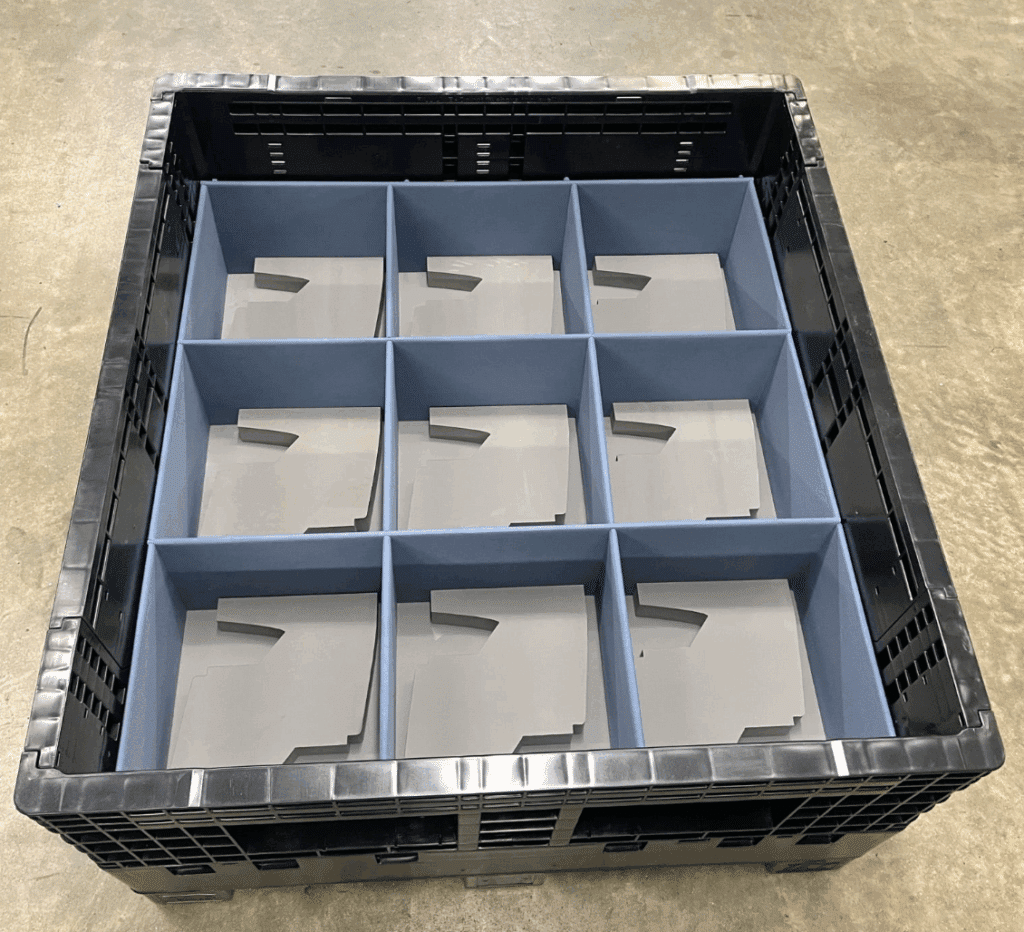
As you consider your packaging needs, your choices will generally fall into three main categories. Understanding the primary role of each will help you determine the best strategy for your business.
Standard Packaging
This refers to off-the-shelf solutions like common-sized boxes or containers. Standard packaging is best for products with conventional shapes and dimensions where speed of acquisition and a low upfront cost are the highest priorities.
Custom Packaging
This is the ideal choice when a product’s unique shape, high value, fragility, or specific branding requires a perfect-fit solution. Custom designs are engineered to minimize material waste, eliminate internal movement, and provide superior protection, making them a smart investment for specialized goods.
Reusable Packaging
This is a strategic, long-term investment for companies with a predictable, closed-loop supply chain (where packaging is consistently returned). Designed for durability, reusable containers are built to lower long-term costs by eliminating repeat purchases and to help companies meet their sustainability goals by drastically reducing waste.
The Best of Both Worlds
It’s important to note that these categories are not mutually exclusive. In fact, the most effective solutions often combine elements. A custom-designed solution can—and often should—be engineered to be reusable, delivering the maximum long-term value and operational efficiency for your business.
Unleashing the Full Potential of Industrial Packaging Solutions
Industrial packaging is more than just a container—it is a strategic asset influencing efficiency, sustainability, and long-term success. By selecting solutions that are customizable, durable, or reusable, companies can protect products, streamline logistics, and reduce operating expenses. Investing in secure packaging solutions not only mitigates risks but also creates a competitive advantage in today’s fast-paced market. If your business is ready to reap these benefits, contact Universal Package to learn how our expert team can help design tailored industrial packaging solutions that meet your unique needs.


